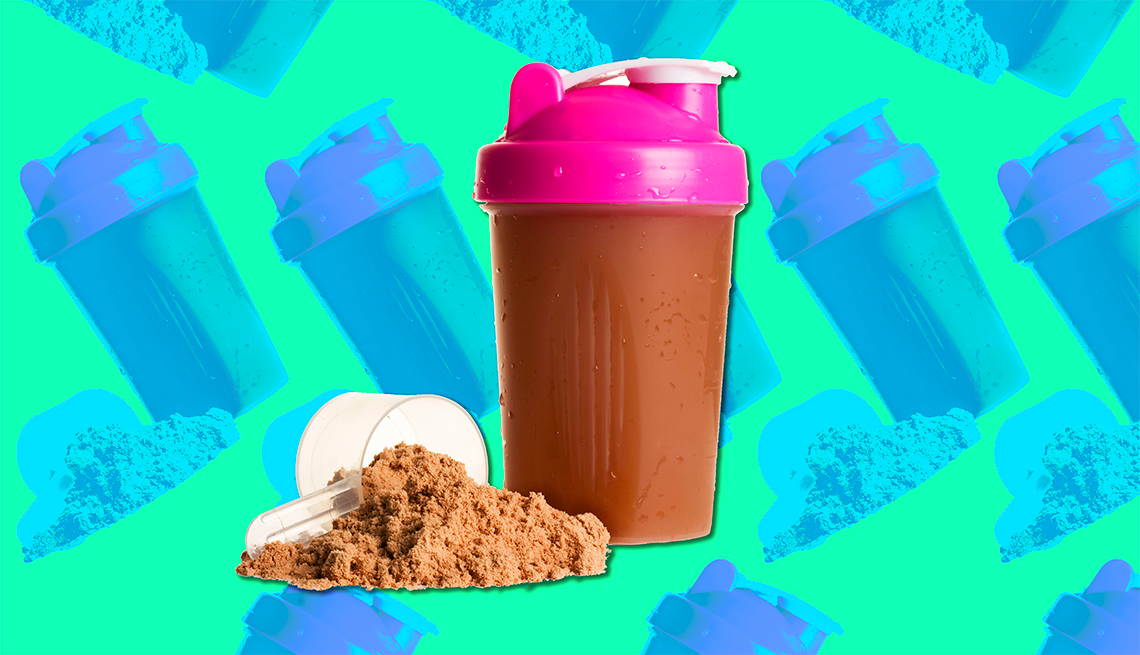AARP Hearing Center


For Paul Kidwell, caregiving doesn’t just take place in hospital rooms or by the bedside, it starts in the kitchen. Each week, he commits to preparing three Chinese meals for his wife, Aibai, who has been living with Parkinson's disease since 2007. The homemade dishes, including stir-fries, steamed fish and moo shu pork, may not rival Michelin-starred menus, but they are her favorites that make her happy despite being confined to a wheelchair and having limited mobility.
From chopping vegetables into bite-sized pieces to modifying recipes to accommodate her swallowing difficulties, every meal is crafted with her safety, comfort and dignity in mind.
He calls himself “a man with a pan,” but in practice, he’s the one making sure meals meet her dietary needs and are full of flavor — even as Parkinson’s steals her independence and diminishes her interest in food.
Puree Perfection:
3 New Recipes
Need to add some variety to your loved one’s diet? Try these three delish pureed recipes created exclusively for AARP by JM Nutrition: Puree Chicken Salad, Puree Roasted Carrot White Bean and Tahini Soup, and Puree Cauliflower Mashed Potatoes.
“I’ve always believed caregiving is an act of love. For me, cooking has always been how I show that love,” says Kidwell, who is developing a newsletter titled, Cooking for My Wife and Other Love Stories.
Inevitably, a loved one’s dietary needs will change as their health declines, due to chronic disease, weight loss or aging. Instead of relying on vague advice like “eat better,” take the initiative to consult a nutrition professional, such as a dietitian, who can develop a clear, personalized plan that actively supports your loved one’s medical conditions, physical needs and food preferences.
“Older adults may have reduced appetites, difficulty chewing or swallowing, or simply lose interest in eating,” says Angel Planells, a Seattle-based registered dietitian and spokesperson for the Academy of Nutrition and Dietetics. “Instead of three large meals, aim for five to six smalleer meals or snacks each day.”
Ensuring protein-rich diet
For individuals navigating illness, aging or recovery, every eating opportunity is a chance to support strength and health, especially through adequate protein intake. Incorporating protein-rich foods like eggs, yogurt, tofu, beans and protein shakes into meals and snacks can make a significant difference, says Planells. “Prioritizing protein is key to keeping muscle mass, which in turn helps maintain mobility, independence, and reduces the risk of falls and related complications.”
Mary Kapp, of southern Michigan, has discovered creative ways to boost protein in meals for her wife, Tressa Duffin, which helps her maintain weight as she faces the challenges of amyotrophic lateral sclerosis (ALS). “In every meal, I make sure she is getting sufficient protein through a variety of sources, including chicken, beef, salmon, hemp seeds, yogurt, collagen, nuts and seeds.” Kapp also makes sure her wife eats fresh produce, as well as smoothies made with fresh fruit.
Shirley Khuong, a dietitian with JM Nutrition of Vancouver, and Planells suggest some high-protein foods to incorporate into meals:
Vegetable-based protein
- Chickpeas
- Black beans
- Edamame
- Lentils
- Nut butters (peanut, almond)
- Nuts (almonds, peanuts, pistachios)
- Quinoa
- Seeds (chia, pumpkin, hemp)
- Tofu
- Tempeh
- Whey
Meat and dairy protein
- Chicken breast
- Cottage cheese
- Lean beef
- Eggs
- Greek yogurt (especially plain, nonfat)
- Fish (tuna, salmon, cod)
- Pork loin
- Shellfish (shrimp, scallops)
- Turkey



































































More From AARP
Bradley Cooper’s Other Role: Caregiver
Bradley Cooper highlights caregiving in PBS special
Physical Therapy: What Caregivers Need to Know
Physical therapy supports older adults and their caregivers
Caregiving for Loved Ones With ALS
Ways to provide support for this progressive disease